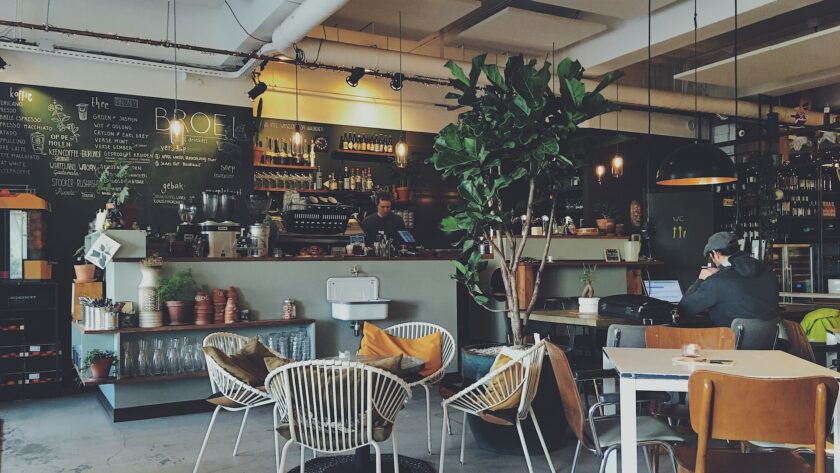Your cafe’s atmosphere influences how customers feel and what they buy. The right blend of music, lighting and ambient noise can create an inviting and comfortable environment for your patrons.
Sound science is complex, but it can be a great way to improve your cafe’s atmosphere. Keep your music volume moderate, and use this guide to get started.
Sound Pressure
The sound pressure of a sound wave varies depending on the frequency and direction. It is also affected by the medium in which the sound is transmitted and its loudness.
Typically, the lowest sound pressure that a human can hear is approximately 2 10-5 Pa (0.000020 mPa) or 2 ten billionths of an atmosphere. However, damage to the ear can affect the range of a sound’s sensitivity.
As a rule of thumb, if two equally strong sound sources are mixed, the combined level increases by three decibels. This is because of a difference in the way the frequencies react to each other.
A sound pressure meter is commonly used to measure the proper levels of a room. It must meet international standards such as IEC 61672-2013.
Most sound level meters provide readings in A, C, and Z-weighted decibels. They may also feature a fast time weighting (instead of impulse or slow) and frequency weightings if the source is close enough to the meter for them to be helpful.
The logarithmic scale of dB is often convenient for expressing the low and high noise levels that humans can hear without discomfort. This is because the slightest sound a human can listen to, and the highest one they can hear without pain, falls on the logarithmic scale.
Sound Frequency
Sound is a wave that travels through a medium such as air. Its characteristics include frequency, wavelength, amplitude, period and velocity.
Frequency is the number of times a sound wave repeats itself each second. A lower-frequency sound has longer wavelengths and oscillates fewer times per second. High-frequency sounds have shorter wavelengths and oscillate more times per second.
The compressions and rarefactions determine the length of a sound wave (or wavelength) in the vibrations that make up a sound. A short wavelength means the sound wave vibrates more times per second and is perceived as a higher pitch.
When a sound wave hits an object, it will reflect off of that object and return to the source. This is known as an echo.
You may have different sound sources in a restaurant or cafe, such as music and the noise of other people talking. Using the best background music for a cafe and the correct frequency for each can make a big difference in how your customers perceive the atmosphere of your cafe.
For example, a cafe serving savory snacks should not play loud, booming music, while a restaurant serving heavy metal rock should play soft, ambient music. This is a subtle but vital point to remember when implementing sound into your business.
Sound Volume
A restaurant that is too loud will make guests uncomfortable. It also ruins the experience for those trying to converse over their meals with friends or wanting peace to enjoy their food.
It is only sometimes necessary for a sound system to be booming, but it is essential that the volume is consistent and evenly distributed throughout the cafe. Finding the right balance between noise and music can be challenging, so learning how to make it happen in a way that’s pleasing to your guests is essential.
The amplitude of sound waves is another factor that determines their loudness and how they affect the atmosphere. More excellent amplitude sound waves have more energy and intensity, which makes them sound louder as they travel farther from the source.
Wind and temperature also affect how sound waves travel since air molecules change their shape to reflect more or less of a wave depending on its direction. When it’s windy, the air molecules will refract downwind, which may make sounds that are usually heard to be much more prominent.
Students need to understand how sound affects the atmosphere of a cafe, the human ear and the natural environment. They can use their sound meter to record and analyze the effects of different sounds on the environment and visitors to the cafe.
Sound Mixing
Sound Mixing is the art of blending sounds to create a harmonious soundscape. This includes balancing the level of every audio component in a scene, adjusting frequencies and stereo imagery, and more.
While it may seem simple, sound mixing is highly complex, requiring a mastery of many different skills. Professionals who mix sound have studied engineering, music production, acoustics and psychoacoustics to ensure they are making everything from background noise to dialogue sound its best.
It also considers various other aspects, such as sample rate and bit depth, loudness control, ADR (audio description), Foley, etc. All of these things must be done correctly to achieve the best result for your project.
Another critical aspect of sound mixing is panning which relates to audio distribution across the stereo field. This ensures that all audio elements are correctly placed on the left or right side of the stereo image.
Creating an excellent audio balance can make or break the atmosphere of your cafe. For example, too much background noise can drown out the main dialogue and make it hard to understand what the characters are saying. It is also essential to ensure that any music tracks are at a low enough volume to not interfere with the dialogue.




